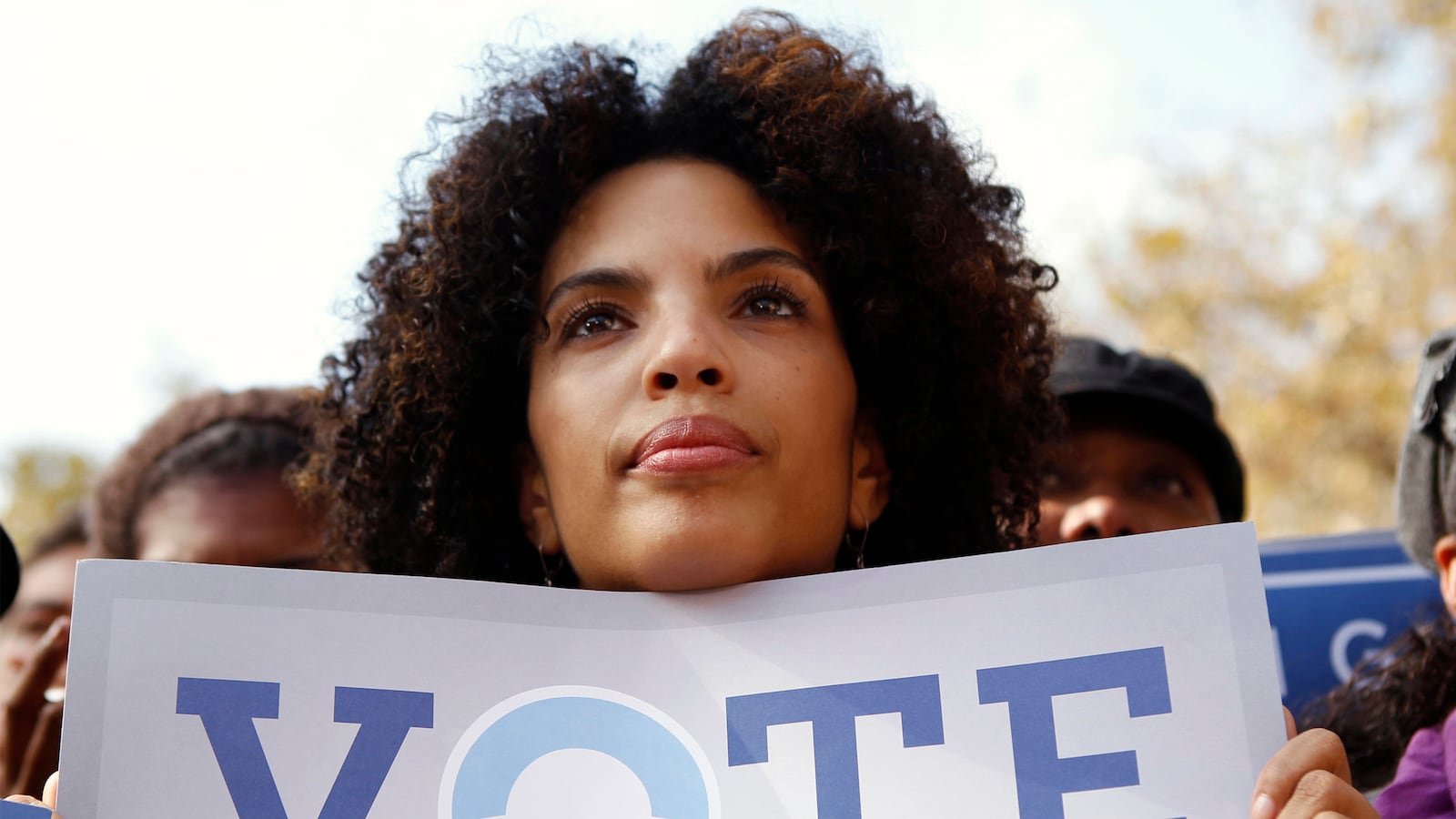Electoral defeats are painful, but clarifying. As Democrats survey the damage left by a larger-than-expected Republican wave, it’s possible to discern four signposts on the road to a progressive recovery.
First, the party needs to start working on a post-Obama agenda.
Anti-Obama sentiment engulfed Democratic candidates everywhere, dragging red-state senators underwater and nearly drowning seemingly safe incumbents in purple or blue states, like Sens. Mark Warner of Virginia and Jeanne Shaheen of New Hampshire. The main “issue” in all these campaigns was the Democratic candidates’ supposed fidelity to Barack Obama. Only in this sense did Republicans succeed in nationalizing the midterm, but it was enough.
In his press conference Wednesday, a rather clueless President Obama took no responsibility for the wipeout and conveyed no urgency about making course corrections. This suggests that while Obama will be the main bulwark against GOP hubris and extremism over the next two years, Democrats will have to look elsewhere for the new ideas and arguments they need to regain the political initiative and rebuild support for progressive goals.
Second, those ideas won’t come from the party’s current congressional leadership, either.
Speaker Nancy Pelosi and Majority Leader Harry Reid are able legislative tacticians, tough partisan warriors, and world-class fundraisers. The charge now being leveled against them by some on the left—that they haven’t been aggressive enough in confronting Republicans—is ludicrous.
But agile tactics and fighting spirit aren’t enough, especially if voters think they are mainly in the service of expanding benefits for favored party constituencies. What Democrats need is a larger vision for restoring shared prosperity that can unite the interests of core partisans with those of moderate and independent voters. The current leadership has discouraged creative thinking by party pragmatists about ways to speed up economic growth, improve the regulatory environment for innovation, or make government work better. Instead, they’ve enforced conformity to focus-grouped “messages” tailored narrowly to different slices of the electorate.
Yes, I know that raising the minimum wage is popular. But it didn’t lift Democrats last Tuesday, and neither did alarmist rhetoric about a “war on women.” Next time around, Democrats will need to offer voters something more inspiring than a tired pastiche of messages aimed at bribing or scaring voters. It’s time to replace the current team with a younger crop of rising leaders open to bigger, bolder ideas for tackling America’s big problems.
Third, Democrats can’t count on demographics to save them.
Since Obama’s 2008 election, the party has beguiled itself with prospects for a permanent Democratic majority based on forces that are growing in the electorate: minorities, millennials, single and college-educated women, and professionals with advanced degrees. These groups turn out in greater numbers in presidential elections, giving Democrats a presumptive advantage heading into 2016.
But the president suffered some erosion of his big margins with such voters in 2012, and there’s no guarantee that the party’s 2016 standard-bearer will be able to recreate the Obama coalition. Polls have shown growing disillusionment with Obama among young voters, who have been slammed by a perfect storm of scarce jobs, falling incomes, and soaring student debt. They mostly stayed home last Tuesday; just 12 percent of the voters were under 30.
Nor do Democrats have a lock on Hispanic voters, who still face slack labor markets, zero wage growth, and tight credit even as the “recovery” skews most of its benefits to the top 2 percent. Many also are disappointed about the party’s failure to deliver on its promises to pass immigration reform.
Even as Hispanics favored Democrats this week, some Republicans wooed them ardently and made surprising inroads. In Texas, for example, Greg Abbott invested heavily in Latino outreach and media, and wound up winning 44 percent of their vote in his successful race for governor. In Georgia, Senator-elect David Perdue likewise garnered more than 40 percent of the Latino vote.
Fourth, Democrats can’t give up on white voters.
As a practical matter, cutting into the GOP’s enormous margins with white voters (20 points in the midterm) will insure them against losses among young and Hispanic voters. But more important, a more respectable showing among middle- and working-class whites is good for the party’s progressive soul.
These voters simply do not believe Democrats have their economic interests at heart. Nor are they moved by outrage over inequality or appeals to class grievance. According to exit polls, 62 percent of white non-college voters preferred Republicans—the party of plutocrats—this week.
Democrats should offer a different economic approach—a high-growth strategy that works for all. It would focus like a laser on reviving the dynamism of America’s private economy, so that it can generate the good jobs we need to support an expanding middle class. Such a strategy would fundamentally change fiscal policies that encourage debt-fueled consumption rather than long-term investment in our families and future growth. It would build on our comparative advantages in digital innovation and speed progress toward the Internet of Everything, which promises to lift productivity across our entire economy. It would support efforts to “onshore” production and leverage private capital to modernize transport and other public systems. It would lower regulatory obstacles to innovation and entrepreneurship, and capitalize on America’s shale windfall within a balanced energy policy that serves both economic and environmental goals.
Forget about new candidates, more money, and better political “messaging.” For now, what progressives need more than anything else is to start work on a bolder vision for making America great again.






